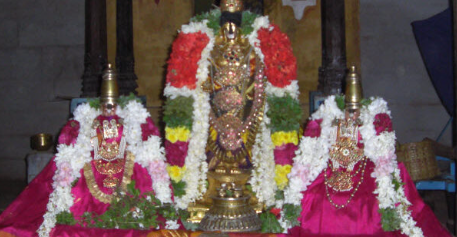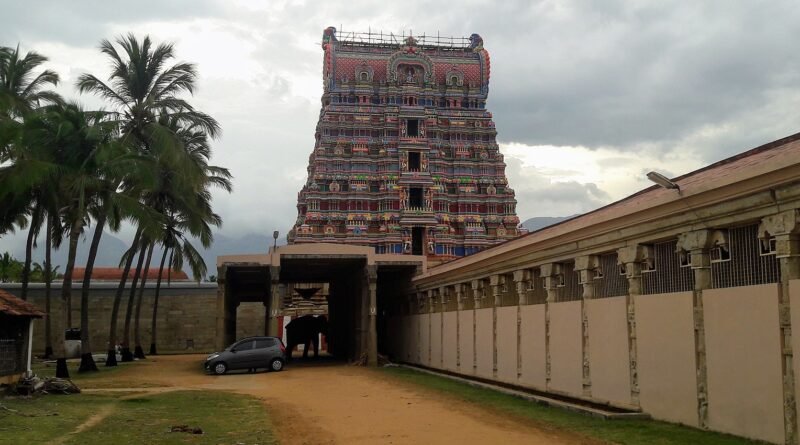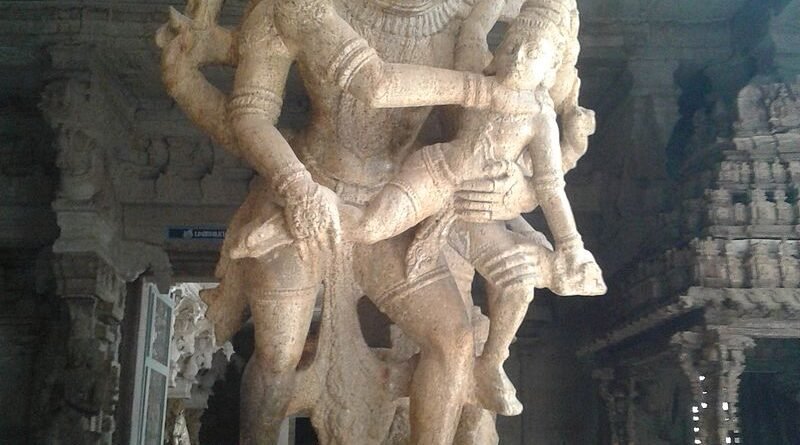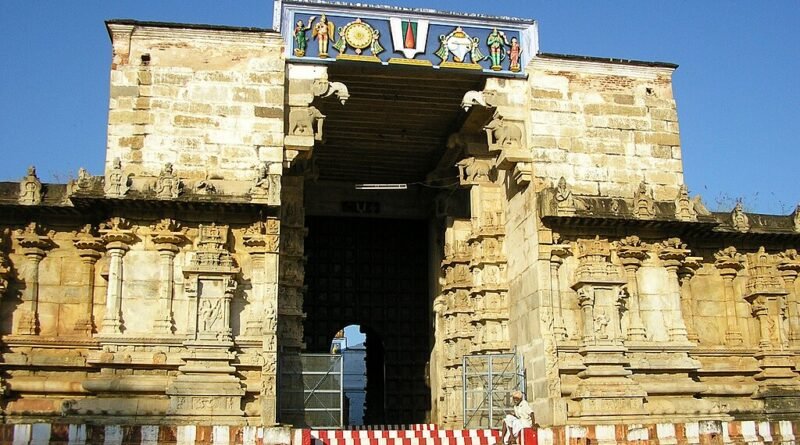Vaishnava Nambi and Thirukurungudivalli Nachiar temple
Vaishnava Nambi and Thirukurungudivalli Nachiar Temple in Thirukkurungudi, a village in Tirunelveli district in the South Indian state of Tamil Nadu, is dedicated to the Hindu god Vishnu. It is located 45 km from Tirunelveli. Constructed in the Dravidian style of architecture, the temple is glorified in the Naalayira Divya Prabandham, the early medieval Tamil canon of the Alvar saints from the 6th–9th centuries CE. It is one of the 108 Divya Desams dedicated to Vishnu, who is worshipped as Vaishnava Nambi and his consort Lakshmi as Thirukurungudivalli.The temple is locally referred as Dakshina Vaikuntam, the holy abode of Vishnu.
A granite wall surrounds the temple, enclosing all its shrines and two of its three bodies of water. The rajagopuram, the temple’s gateway tower, is 110 ft (34 m) tall. Vaishnava Nambi is believed to have appeared to slay the asura Somuka who abducted the four Vedas. The temple follows Tenkalai tradition of worship. Six daily rituals and three yearly festivals are held at the temple, of which the ten-day annual Brahmotsavam during the Tamil month of Chittirai (April – May) and Brahmotsavam during the month of Chittirai, being the most prominent. The temple is maintained and administered by the Hindu Religious and Endowment Board of the Government of Tamil Nadu.
Legend
As per accounts in the Varaha Purana, a treatise of Varaha, an avatar of Vishnu, Varaha preferred to stay at this place with his consort Varahi in a small form and hence came to be known as Thirkurungudi (literally meaning a small house).
As per a Hindu legend, Nambaduvan, a peasant and singer (locally called panan) from lower section of the society, was an ardent devotee of Vishnu. On account of his low life, he never entered the temple and worshipped from outside. While walking towards the temple one day, he was stopped by a asura. He sang the verses which he set for the presiding deity to him. He also assured the asura that he will come back from the temple when the asura can consume him. Nambi, the presiding deity was pleased by his devotion and appeared outside the temple. While returning, Nambi appeared as a Brahmin and tried to convince him to escape the asura. But Nambudavan was staunch and wanted to be true to his promise. The asura was pleased by the songs and said it did not want to consume him anymore. It is believed that the asura was a Brahmin who was cursed during his previous birth as he was not sincere doing his penance. He was relieved off his curse listening to the songs of Nambaduvan.
History
The temple has inscriptions from the 10th century during the Medieval Chola period indicating grants to the temple in the form of sheep. Another inscription from the 14th century is attributed to Sundara Pandya II indicating gifts of 25 cows for the perpetual lighting of ghee lamps in the temple. There are also inscriptions from the same regime indicating gift of lands to the temple. The Nayak period during the 15th century saw lot of additions to the temple complex in terms of pillared halls.The inscriptions on the southern wall of the hall dated 1059 indicates excavation of a channel with dams. There are similar inscriptions on the northern wall indicating repairs made to the same dam. There are two unreadable inscriptions on two pillars of the temple. There are three copper plate inscriptions in the temple dated 1456, 1537 and 1592 indicating grants from Sabala Veera Chandra Ramavarma Maharaja, Vittala Raya of Vijayanagara Empire and Vira Vasantha Venkatadeva Maharaja respectively indicating several grants to the temple.
















